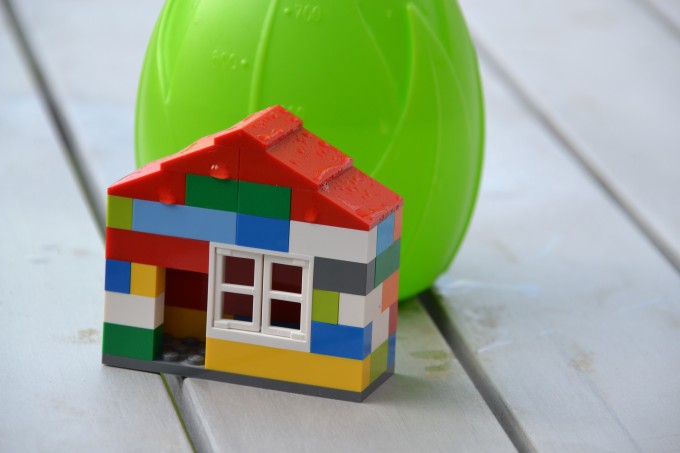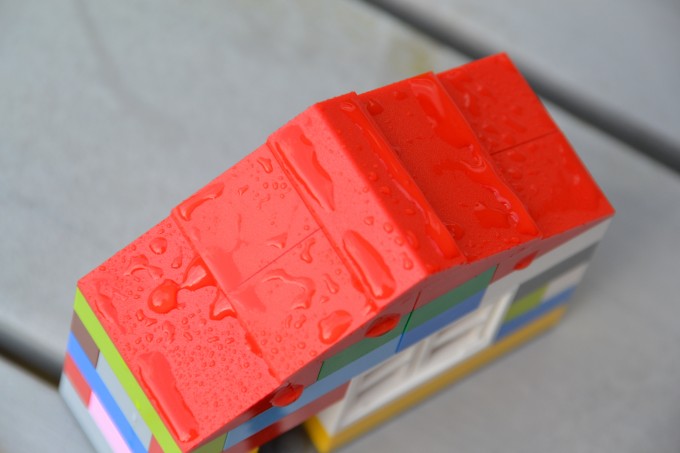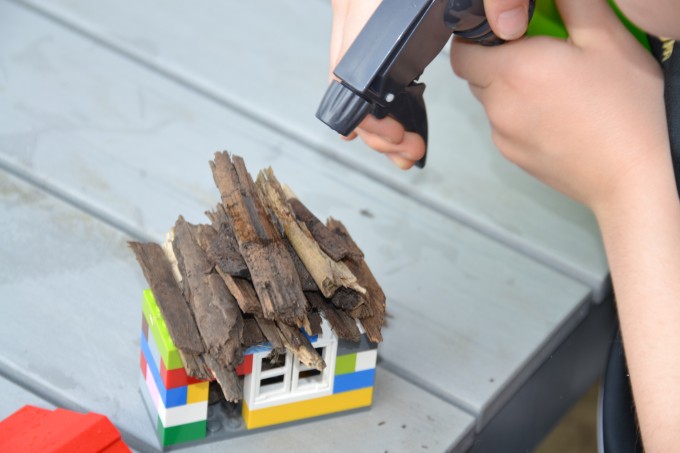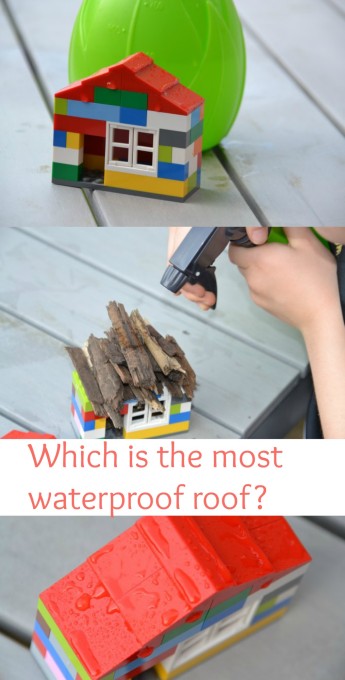This waterproof roof STEM challenge is a simple but fun activity that even very young children will enjoy. My 3,5 and 7-year-old loved it, especially when it came to making it ‘rain’.
LEGO waterproofing experiment
Before starting, we spent a few minutes talking about what we expected to happen and how we could make the investigation a fair test.
We decided that the roof tiles would be the most waterproof, followed by the sticks and then grass. However, we did discuss that it would depend on how many sticks and how much grass we used and that it would be hard to make the comparison fair.
Materials
LEGO House
Roof materials – we used LEGO tiles, sticks and grass
Water sprayer
Method
Place your chosen roof onto the house and spray water on top. We used a set number of sprays to make it a fair test.
Record any moisture inside the house.
Results
As predicted, the roof tiles kept the inside of the house dry, the grass let some water in, and the sticks were also waterproof.
Improvements
To improve the accuracy of this investigation, we decided what we should have done was use grass, sticks, and tiles up to a certain height above the top of the house and keep that constant for all conditions.
Recording the amount of moisture inside the house was difficult. Perhaps if we’d placed paper inside and changed it for each condition, we could have compared the dampness of each piece.
Can you think of any other improvements?
More LEGO science activities
Try one of my 15 Fun ideas for Science with LEGO.
Last Updated on February 22, 2024 by Emma Vanstone





I like the way this got you thinking not only about how to test the different materials, but how to create a fair and accurate test – great problem solving activity!
Great idea for an experiment. I was thinking of making a “water level gauge” inside to measure moisture and putting a paper towel square inside to see if it gets wet at all. Thanks for sharing with After School Link Up.
I might use water tinted with a little bit of blue food coloring and put a paper towel inside the house. The blue water would show up much better on the paper towel and the results of each type of roof could be compared.